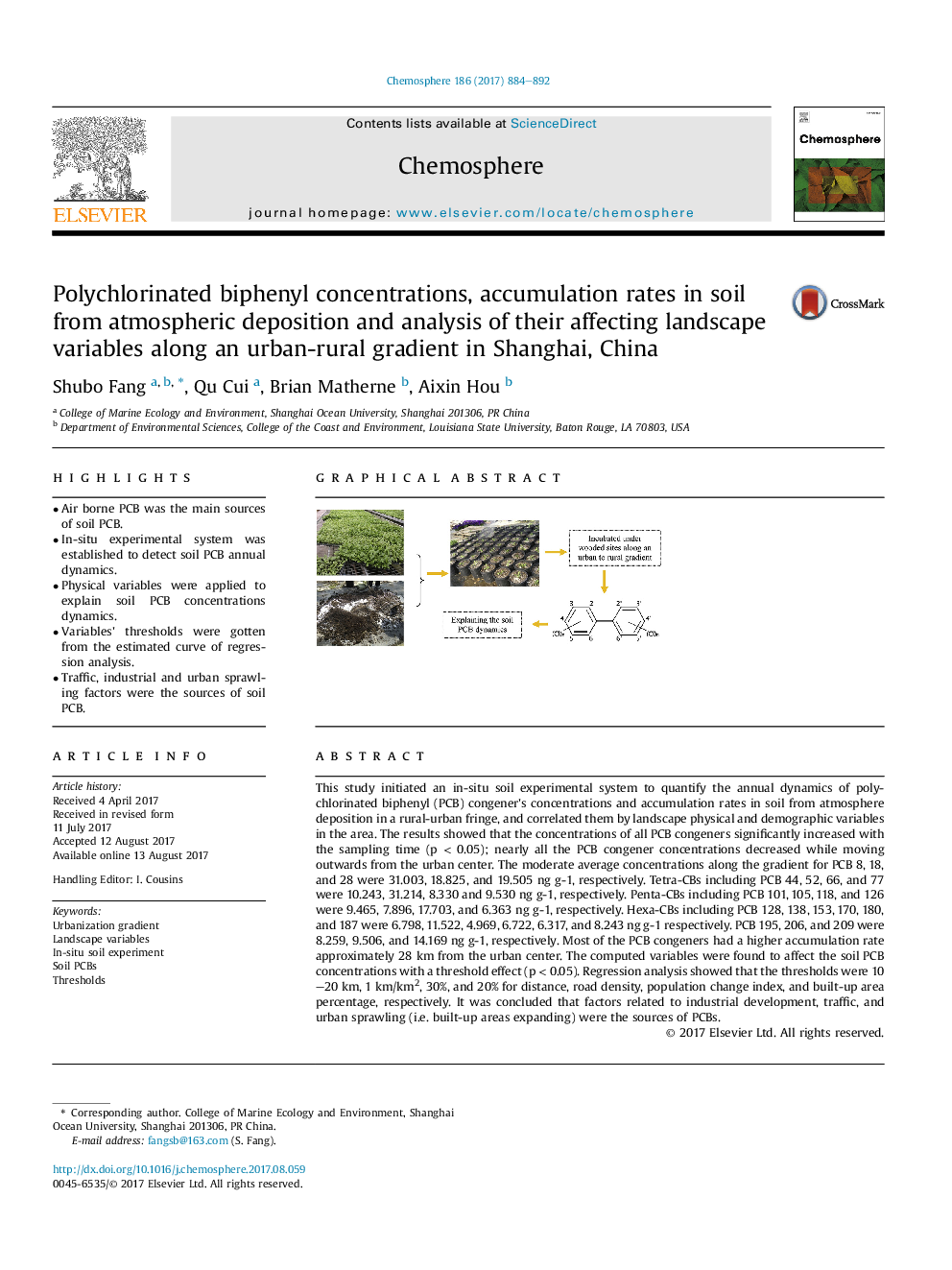| کد مقاله | کد نشریه | سال انتشار | مقاله انگلیسی | نسخه تمام متن |
|---|---|---|---|---|
| 5746039 | 1618785 | 2017 | 9 صفحه PDF | دانلود رایگان |
- Air borne PCB was the main sources of soil PCB.
- In-situ experimental system was established to detect soil PCB annual dynamics.
- Physical variables were applied to explain soil PCB concentrations dynamics.
- Variables' thresholds were gotten from the estimated curve of regression analysis.
- Traffic, industrial and urban sprawling factors were the sources of soil PCB.
This study initiated an in-situ soil experimental system to quantify the annual dynamics of polychlorinated biphenyl (PCB) congener's concentrations and accumulation rates in soil from atmosphere deposition in a rural-urban fringe, and correlated them by landscape physical and demographic variables in the area. The results showed that the concentrations of all PCB congeners significantly increased with the sampling time (p < 0.05); nearly all the PCB congener concentrations decreased while moving outwards from the urban center. The moderate average concentrations along the gradient for PCB 8, 18, and 28 were 31.003, 18.825, and 19.505 ng g-1, respectively. Tetra-CBs including PCB 44, 52, 66, and 77 were 10.243, 31.214, 8.330 and 9.530 ng g-1, respectively. Penta-CBs including PCB 101, 105, 118, and 126 were 9.465, 7.896, 17.703, and 6.363 ng g-1, respectively. Hexa-CBs including PCB 128, 138, 153, 170, 180, and 187 were 6.798, 11.522, 4.969, 6.722, 6.317, and 8.243 ng g-1 respectively. PCB 195, 206, and 209 were 8.259, 9.506, and 14.169 ng g-1, respectively. Most of the PCB congeners had a higher accumulation rate approximately 28 km from the urban center. The computed variables were found to affect the soil PCB concentrations with a threshold effect (p < 0.05). Regression analysis showed that the thresholds were 10-20 km, 1 km/km2, 30%, and 20% for distance, road density, population change index, and built-up area percentage, respectively. It was concluded that factors related to industrial development, traffic, and urban sprawling (i.e. built-up areas expanding) were the sources of PCBs.
459
Journal: Chemosphere - Volume 186, November 2017, Pages 884-892
